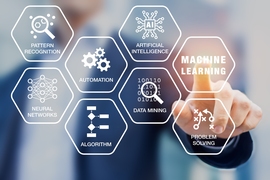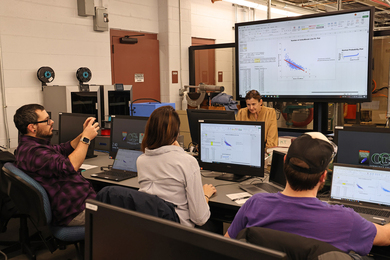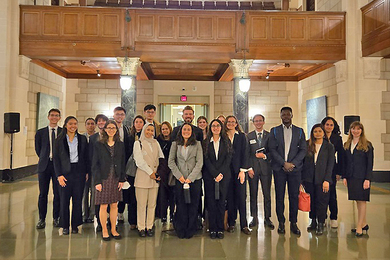Three technology trends are quickly changing global supply chains, revenue management, and the retail industry as a whole: digitization, analytics, and automation. But digital innovation does not come easily. Challenges include internal resistance to change, the siloing of data, and difficulty providing companies with the skills required to understand, predict, and change behavior.
The Accenture and MIT Alliance for Business Analytics has been collaborating with entities across multiple industries to take advantage of these technology trends to impact their business performance. Implementing machine intelligence and digital processes is a substantial opportunity for companies who are willing to innovate. Indeed, the difference between the companies that take advantage of these technology trends and those who do not is the difference between industry performance leaders and industry followers.
Data suggest delaying digital innovation could be a risk to a firm’s long-term health. The Alliance for Business Analytics recently collected data from hundreds of companies and found clear and definable differences between companies that are truly data-driven and those that either have not been successful in using data or have not made a serious attempt to use data in their business. Their study reports a direct relationship between the adoption of machine intelligence and digital business innovation and leading business performance indicators, independent of the industry. In the end, digital innovation not only impacts cost reduction, revenue, profit, and market share but it also affects customer satisfaction, retention, and experience. David Simchi-Levi, professor of engineering systems and of civil and environmental engineering, leader of the Alliance for Business Analytics, and member of the MIT Institute for Data, Systems, and Society, recently sat down to discuss the alliance's work.
Q: How are you working with industry to advance your research and application of your models?
A: Our research has been applied in many companies including Groupon, Rue La La, and a few airline carriers. This has resulted in improved efficiencies, risk mitigation, and significant revenue increase. We are actively working with most of the largest global retailers in the world. This is very exciting, as we're helping to shape the digital retail experience and improve results for both the industry as a whole and the consumer.
Students and postdocs in my analytics lab collaborate with companies across various industries to combine data science, machine learning, and optimization modeling. Together with these companies, we conduct in-depth research on supply chain, business-to-business and business-to-consumer demand prediction improvement, supply chain revenue, and operations optimization using data from across a company’s enterprise.
The companies we work with bring their challenges to us and our focus is on the integration of machine learning and optimization techniques in a way that solve these problems and create competitive opportunities. We work with each company’s internal data and relevant external data and their application environment where our team conducts the research. This enables the development of new approaches that decipher supply chain demand, increase proactive cognitive supply chain responses, predicts consumer demand and optimizes pricing.
This joint research environment is designed to yield powerful new capabilities to exploit data, machine learning and new innovative processes to deliver improved customer service, experience, and retention.
Once these new techniques have been implemented, companies have a new powerful data-driven platform that continues to learn, predict and optimize process and outcomes across the enterprise.
Q: How is technology affecting global supply chains and the retail industry?
A: Digitization, advanced analytics, and automations each enable three business opportunities: First is to improve operations. For example, the work I've done with my research team has provided Ford with the technology that applies data and analytics to identify hidden supply chain risks and develop the appropriate mitigation strategies. Similarly, the work I've conducted through the alliance has provided one of the largest mining companies in Latin America with analytics that uses data from thousands of sensors to improve product quality.
The second opportunity is to provide dynamic and customized offerings. Many retailers, both brick-and-mortar and online, use cost-plus when pricing their products, a simple strategy whereby price is determined by adding a pre-determined markup percentage to the product cost. In recent years, my lab has taken advantage of new opportunities provided by technology trends by applying them to optimize price at Boston-based flash sales retailer Rue La La, online market maker Groupon, and the largest online retailer in Latin America, B2W Digital (B2W). These examples are on-line businesses, which have readily available data and can change prices dynamically, but we also implemented similar methods for brick-and-mortar retailers in applications such as promotional pricing, new product introduction, and assortment optimization.
Finally, the third opportunity is to introduce new business models that were not possible before. This is nicely illustrated with the story of companies such as Rolls-Royce, General Electric, and United Technology. In all of these cases, the companies continuously monitor thousands of engines on commercial aircraft and use analytics to identify problems before they occur. They charge the carriers based on usage time while they are responsible for all maintenance and repairs. This allows the carriers to cut costs, engine downtime, and increase airline safety.
Q: Looking ahead, what do you suggest brick-and-mortar and online retailers should do to take advantage of current trends?
A: Recent trends present significant opportunities for many companies, particularly in the retail industry. But there is no one standard approach for digitizing the supply chain and becoming a data-driven organization. So, it's hard for executives to know where to start and how to integrate the various processes into an end-to-end strategy. That said, doing nothing is no longer a sustainable choice in the fast-paced digital world.
My experience is that to achieve value and scale, companies need to start a journey that involves defining the vision and value targets; identifying changes to the operating model, and organizational structure; and defining data and technology strategies. More importantly, these companies need to realize the future of their businesses requires attracting, motivating, and promoting people with new skills, people who can apply the data and analytics in an effective way.









